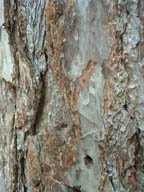linoprint fish and digital experiments

Lino cut ready for printing
I felt like having a go at another lino print yesterday and got the fish above cut. It's just a fun graphic one, stylised, no observation at all I'm afraid, unlike Jeanette, who is doing a series of gyotaku fishes. Though I did remember from wildlife programmes that fishes are often reddish underneath and silvery on top to camouflage themselves from predators.
Rather than leave the lino the oblong shape, I decided to cut around the fish.
Rather than leave the lino the oblong shape, I decided to cut around the fish.

This one involved applying a gradient colour in a lower layer, erasing the white background and painting colours on a layer below the fish, allowing the colours to shine through.
I find that simple traditionally printed lino cuts don't suit my work so I'll use oil paint when I have time to experiment with printing this one. Then I'll be able to use a mix of colours.
I think it would work with 3 or 5 of them in a row in a long thin piece too?
Lino is something I've not done often so this is just for fun.





Comments